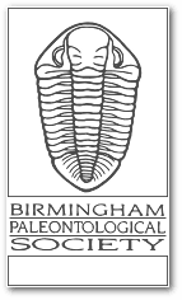Visitor
Paleo in the News
A fierce crocodile ancestor that hunted before dinosaurs has been found
A fierce crocodile ancestor that hunted before dinosaurs has been found
A fierce crocodile ancestor that hunted before dinosaurs has been found
Early views of a supernova’s first moments reveal a lopsided blast
New Scientist recommends this extreme birdwatching documentary
Smart new book takes an axe to the myth of human exceptionalism
Sperm are selfish – and so are we
Surprising new biography of Francis Crick unravels the story of DNA
AI eavesdropped on whale chatter. It may have helped find something new
This fly’s flesh-eating maggot is making a comeback. Here’s what to know
A 540-million-year-old fossil is rewriting evolution
A 540-million-year-old fossil is rewriting evolution
A 540-million-year-old fossil is rewriting evolution
To decode future anxiety and depression, begin with a child’s brain
HIGH SCHOOL SENIORS HONORED AS 2025 ROGERS PECCARY SCHOLARS
The Raymond M. Alf Museum of Paleontology is located on the campus of The Webb Schools and has the unique distinction as the only nationally accredited paleontological museum on a high school campus. As such, our high school students are heavily involved in museum programs from public outreach to research. For students in 11th and 12th grade, they can participate in the Advanced Studies in Paleontology class and work alongside our professional paleontologists to conduct actual research using Alf Museum specimens.
Rogers Peccary Scholars are 12th grade students in the Advanced Studies in Paleontology class who have not only completed the full set of science coursework for paleontology at The Webb Schools, but they have also undertaken an original research project in collaboration with the Museum curator, Dr. Mairin Balisi, and/or director, Dr. Andrew Farke. Students are awarded this distinction in honor of their work in making a lasting contribution to scientific knowledge. Students were honored and received their Peccary Society pin during the Annual Peccary Society Dinner on October 24th.
Congrats to our 2025 Rogers Peccary Scholars!
Dr. Andy Farke’s class
- Andres Caballero
- Matthew Jung
Dr. Mairin Balisi’s class
- James Base
- Fionn Graham
- Andrew Huang
- Sophie Lin
- Mandana Mojaverian
- Mikey Pino
Meet our Rogers Peccary Scholars and learn about their research projects in the video below.
